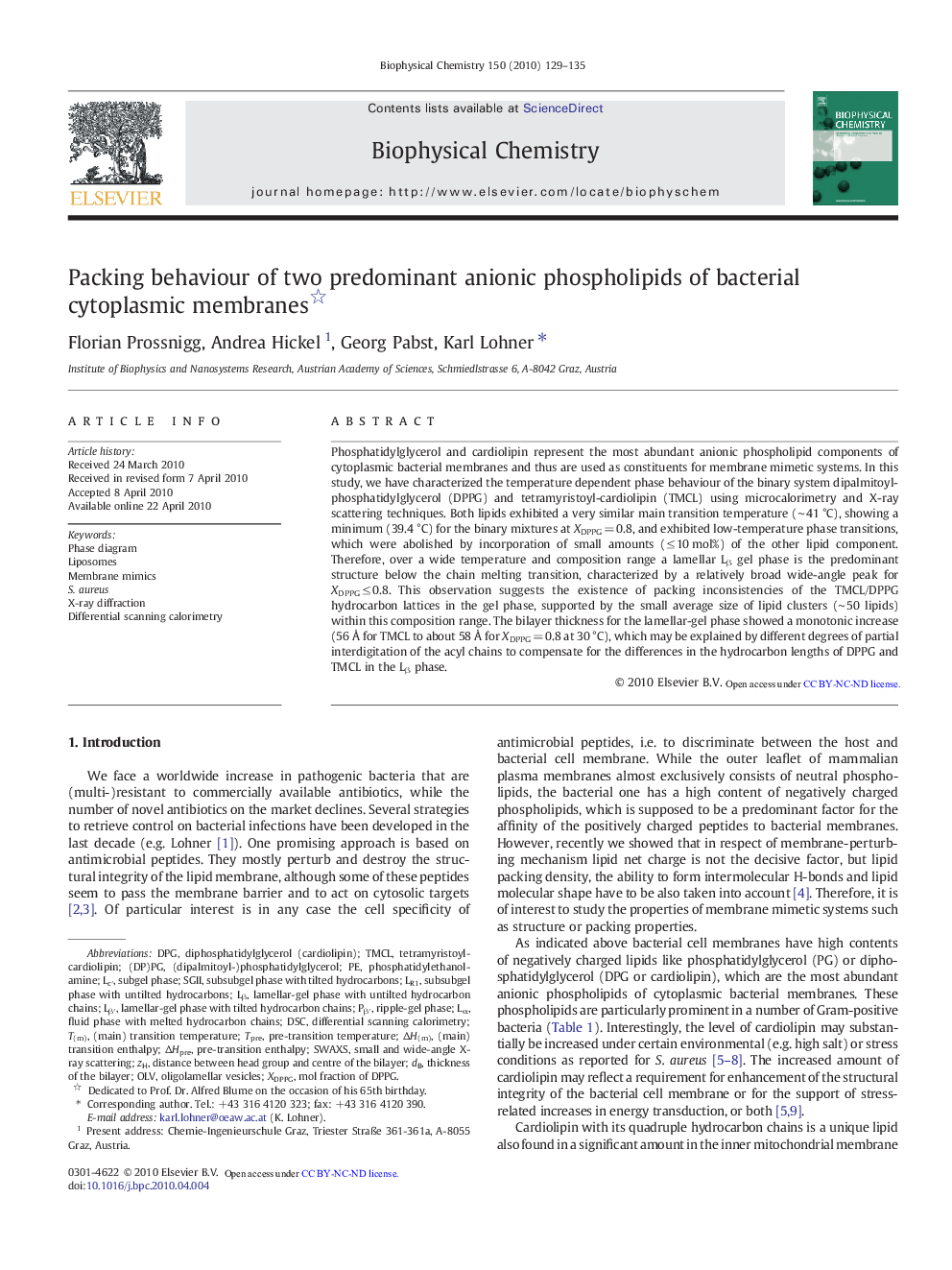| کد مقاله | کد نشریه | سال انتشار | مقاله انگلیسی | نسخه تمام متن |
|---|---|---|---|---|
| 5371379 | 1503957 | 2010 | 7 صفحه PDF | دانلود رایگان |

Phosphatidylglycerol and cardiolipin represent the most abundant anionic phospholipid components of cytoplasmic bacterial membranes and thus are used as constituents for membrane mimetic systems. In this study, we have characterized the temperature dependent phase behaviour of the binary system dipalmitoyl-phosphatidylglycerol (DPPG) and tetramyristoyl-cardiolipin (TMCL) using microcalorimetry and X-ray scattering techniques. Both lipids exhibited a very similar main transition temperature (â¼Â 41 °C), showing a minimum (39.4 °C) for the binary mixtures at XDPPG = 0.8, and exhibited low-temperature phase transitions, which were abolished by incorporation of small amounts (â¤Â 10 mol%) of the other lipid component. Therefore, over a wide temperature and composition range a lamellar Lβ gel phase is the predominant structure below the chain melting transition, characterized by a relatively broad wide-angle peak for XDPPG â¤Â 0.8. This observation suggests the existence of packing inconsistencies of the TMCL/DPPG hydrocarbon lattices in the gel phase, supported by the small average size of lipid clusters (â¼Â 50 lipids) within this composition range. The bilayer thickness for the lamellar-gel phase showed a monotonic increase (56 à for TMCL to about 58 à for XDPPG = 0.8 at 30 °C), which may be explained by different degrees of partial interdigitation of the acyl chains to compensate for the differences in the hydrocarbon lengths of DPPG and TMCL in the Lβ phase.
Journal: Biophysical Chemistry - Volume 150, Issues 1â3, August 2010, Pages 129-135